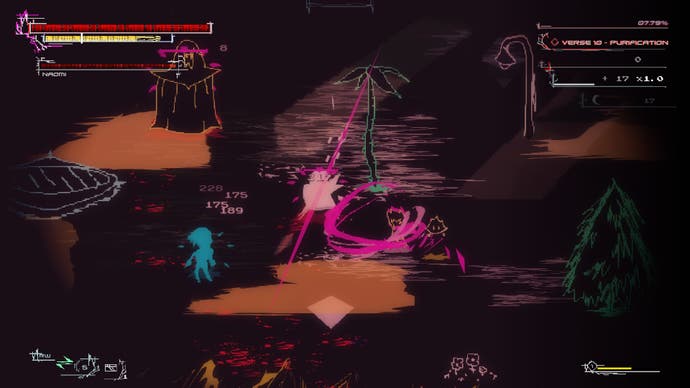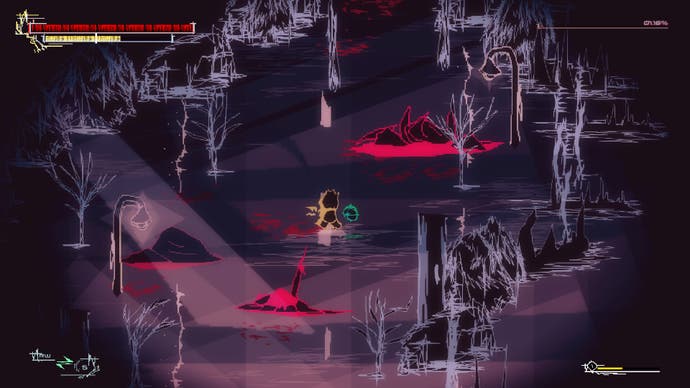Death of a Wish is a gloomy combat masterclass
Lash is more.
In Eurogamer's Star Wars Jedi: Survivor review, Chris Tapsell had a lot of fun picking apart the ways various action games present genre-standard mechanics, such as parrying. "In God of War the entire game around you slows, warps, and your shield returns the blow with some almighty elastic snap," he wrote. "In Sekiro a parry is a small chip on the enemy's stance gauge - the real health bar of Sekiro - one of a dozen rapid, immaculately-timed strikes you might have to land just right."
I like videogame criticism that lingers on vicious little details like these. The most popular games rely heavily on quite a small collection of commercially proven concepts and themes, which makes it easy to skim the delicate touches that set individual works apart. Sometimes, those smaller tweaks and flourishes are more functional and contained - a touch of slow mo for your parry, to make the combat system slightly easier to master than its nearest competitors. But in careful hands, they can give you the soul of the game.
Death of a Wish from Colin Horgan, aka Melessthanthree, feels like one such game, a hack and slash that retunes the staple mechanics of combos, dodges and parries to further a story about overthrowing a torrid metaphysical world. It's a follow-up to Horgan's LUCAH: Born of a Dream, which I got embarrassingly overwrought about way back in 2019.

Based on an hour's play, Death of a Wish continues Horgan's explorations of religious or filial guilt and the journey toward queer self-acceptance. It tells the story of a child ripping apart the cult that reared and subjugated him, and takes place in a scratchy underworld of mortified bodies and quasi-Christian symbols.
Appropriately, the combat feels like flagellation, with arcs of energy that roll around the participants and give the game a more decided visual rhythm than you'd get from just swinging a sword. Impacts register as fizzy cracks and slaps, not thuds and booms - you can feel that the principle damage-dealer here is torque, rather than brute muscular force. There's a lovely contrast between the almost disdainful, squashed-down representation of the characters themselves and the scale and flamboyance of their moves.
The combat is also a careful act of violence against the environmental art, which is made up of stark yet restless outlines and the suggestion of solid objects - rocks, trees and people that flicker like candleflames in a breeze. Those raking blows seem to slice into the game's shifting substrate, as though the very landscape were a half-embodied ghost you're trying to exorcise - or perhaps, whip into shape?
Open the menus and you'll find a familiar, but labyrinthine suite of upgrade options and stances beneath it all. There are drone-type creatures you can equip for ranged attacks that slice up the screen in different ways: the default laser cuts unceremoniously through mobs with minimal wind-up, breaking the tempo a little in a way I find intriguing. There's also a Corruption bar that links skill to self-preservation in less obvious ways. The more artfully you fight, the less your character, Christian, will succumb to the setting's baleful influence. Let the bar fill all the way and it's game-over.

Death of a Wish is shaping up to be a wonderful reminder that atypical "arthouse" games can tick the same boxes as Capcom's finest creations, while pursuing their own sensibility and themes. I often feel intense sympathy for any indie developer working in hack and slash specifically - the genre's giants, Bayonetta and Devil May Cry, seem impossible to live up to in terms of both spectacle and finesse. But Horgan's work is proof that you don't need a full-bore motion-capture operation and an army of animators to stage fights that snap and sizzle.

